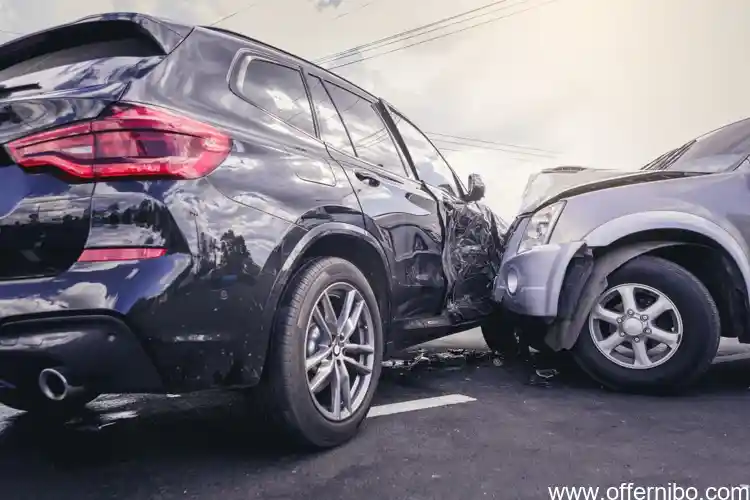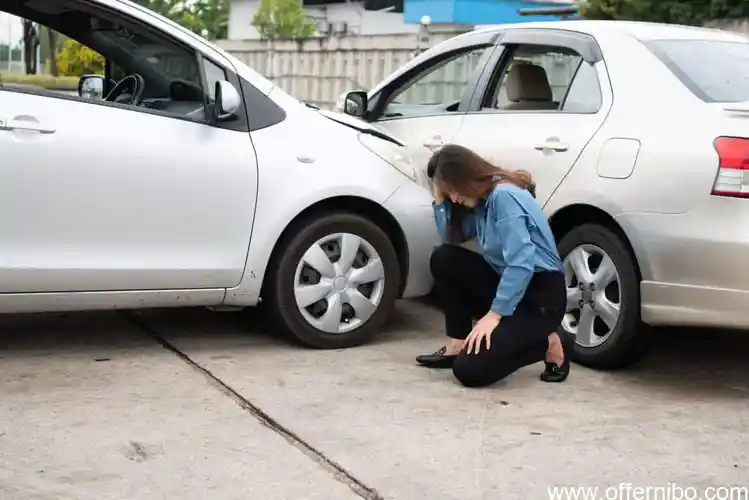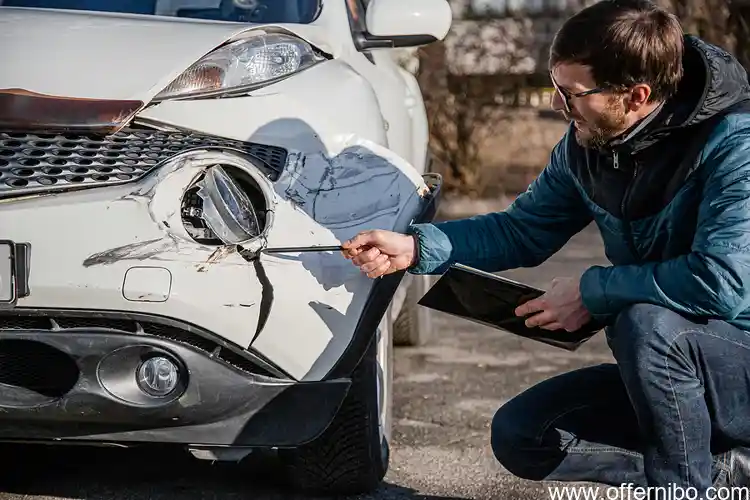Being involved in a car accident is an already stressful experience, and it can become even more frustrating when the other driver provides false or inaccurate information. In such situations, it’s crucial to take appropriate steps to protect your rights and ensure a fair resolution. This comprehensive guide will equip you with the knowledge and strategies you need to navigate these challenges. We will explore what to do when someone hits your car and gives you wrong information, including understanding legal procedures, assessing the damage, gathering evidence, exploring legal options, navigating insurance claims, and dealing with uncooperative drivers. By following these steps, you can minimize the impact of this unfortunate event and safeguard your interests.
What to Do When Someone Hits Your Car and Provides False Information?

If you’ve ever been in a car accident, you know how stressful and overwhelming it can be. But what happens when the other driver provides false information after hitting your car? It can feel like the whole world is against you, but that’s not always true. There are steps you can take to protect your rights, including understanding the legal process, reporting the accident accurately to the authorities, and seeking legal advice if necessary.
Understanding Legal Procedure
When someone hits your car and provides false information, it can be an incredibly frustrating and overwhelming experience. The first step is to remain calm and collected. It’s understandable to be upset, but getting agitated will only hinder your ability to handle the situation effectively. Instead, take a deep breath and focus on gathering accurate information. Exchange information with the other driver, including their name, address, phone number, insurance policy number, and license plate number. If possible, take photos of the accident scene and any visible damage to your car. These steps will help you protect your rights and ensure that you have a record of the incident.
Importance of Reporting Accurately
If you find yourself in the unfortunate situation where someone hits your car and provides false information, it’s crucial to remain calm and take immediate action. Providing false information after a car accident is a serious offense, and understanding the legal ramifications is paramount. By understanding the procedure, importance of reporting accurately, and potential legal advice, you can protect your rights and navigate the situation effectively.
Seeking Legal Advice
When someone hits your car and provides false information, it can be a frustrating and stressful experience. You may be wondering what to do and how to protect your rights. The first step is to remain calm and collected. It’s understandable to be upset, but getting angry or confrontational will only make the situation worse. Instead, focus on gathering as much information as possible. Exchange contact and insurance information with the other driver, and take photos of the damage to both vehicles. If there are any witnesses, get their names and contact information as well. Once you have all the necessary information, it’s important to report the accident to the police and your insurance company as soon as possible. Providing false information after a car accident is a serious offense, and the police can help you investigate the incident and hold the other driver accountable.
Assessing the Damage and Gathering Evidence

“Someone hit my car and gave me wrong information” – this is a nightmare scenario for any driver. The aftermath of a car accident can be stressful and confusing, especially if the other driver flees the scene or provides false information. In such situations, it’s crucial to remain calm and take the necessary steps to protect your rights and ensure a fair resolution. One of the most important things you can do is assess the damage and gather evidence. Documenting the scene, exchanging information, and obtaining witness statements will strengthen your case and increase the chances of recovering damages or holding the at-fault driver accountable.
Documenting the Scene
After a car accident, it’s crucial to assess the damage and gather evidence promptly. This will strengthen your claim and protect your rights. Take photos of the scene, capturing both the damage to your car and any visible injuries. If possible, get contact information from witnesses and exchange insurance details with the other driver. It’s essential to remain calm and collected during this process, even if the other driver is hostile or evasive. Remember, the more evidence you have, the better equipped you’ll be to pursue legal action if necessary.
Contacting Insurance Companies
If someone hits your car and provides false information, it’s crucial to assess the damage and gather evidence promptly. Document the scene by taking photos or videos of the damage, skid marks, and any other relevant details. Contact your insurance company as soon as possible to report the accident and initiate a claim. If possible, obtain witness statements from anyone who saw the accident. This evidence will strengthen your case and help establish the truth if the other driver provides inaccurate information. Remember, it’s your responsibility to protect your rights and ensure you receive fair compensation for the damages caused by the at-fault driver’s negligence.
Obtaining Witness Statements
When someone hits your car and provides false information, assessing the damage is crucial. Document the scene immediately, taking photos of all angles, including close-ups of any visible damage. Make detailed notes of the other vehicle’s make, model, license plate number, and any identifying features. Contact your insurance company as soon as possible to report the incident and initiate the claims process. They will guide you on the next steps, including obtaining police reports and witness statements. Gathering evidence is essential for protecting your rights and ensuring fair compensation for the damage incurred.
Protecting Your Rights: Legal Options Available

Protecting Your Rights: Legal Options Available
If someone hit your car and provided false information, it’s crucial to protect your legal rights. Filing a police report is the first step, as it creates an official record of the incident. You should also consider pursuing a civil case to seek compensation for damages and injuries. However, it’s important to be aware of the statute of limitations, which sets a deadline for filing legal claims. By understanding your legal options and taking prompt action, you can ensure that your rights are protected and that the responsible party is held accountable. Contacting an attorney can also provide valuable guidance and support throughout the legal process.
Filing a Police Report
Navigating the legal landscape after being involved in a hit-and-run accident can be overwhelming. To protect your rights and ensure fair compensation, it’s imperative to understand the legal options available to you. The first step is to file a police report, which creates an official record of the incident and initiates an investigation. You may also consider pursuing a civil case if the other driver’s negligent actions caused you significant harm or property damage. It’s crucial to act promptly as there are statutes of limitations that may limit your ability to seek legal recourse.
Pursuing a Civil Case
In the unfortunate event that someone hits your car and provides false information, it’s crucial to protect your rights. Filing a police report is essential to document the incident and ensure an official record exists. This report can serve as valuable evidence in any subsequent legal proceedings. Pursuing a civil case may also be necessary to seek compensation for damages, medical expenses, and other losses incurred as a result of the accident. Understanding the applicable statute of limitations is critical, as it sets a deadline for filing legal claims. By taking prompt action and exploring your legal options, you can safeguard your权益 and hold the responsible party accountable for their actions.
Statute of Limitations
When someone hits your car and provides false information, it’s not just a matter of exchanging insurance details and getting your car fixed. It’s about protecting your rights and ensuring that the person responsible is held accountable for their actions. Filing a police report and pursuing a civil case are two important legal options you should consider.
The police report will serve as an official record of the accident, and it can be used as evidence in a civil case. The civil case will allow you to seek compensation for your damages, including medical expenses, lost wages, and pain and suffering. It’s crucial to act quickly and gather as much evidence as possible, such as witness statements and photos of the damage. Don’t let the guilty party get away with providing false information. Protect your rights and hold them responsible.
Insurance Claims and Coverage Considerations

When someone slams into your car and leaves without providing you with the accurate information, you can feel shaken and uncertain about what to do next. However, filing an insurance claim is crucial in such situations. Your insurance policy safeguards you financially against damages caused by accidents, and navigating it can be a bit daunting. Understanding your coverage and filing a claim promptly is paramount to expediting the process and ensuring a fair settlement.
Understanding Your Coverage
When someone hits your car and gives you false information, filing an insurance claim can be a stressful and confusing process. It’s essential to understand your coverage options and navigate the claims process effectively. Your insurance policy should outline the specific coverages available to you, including collision, comprehensive, and uninsured/underinsured motorist coverage. Collision coverage protects you if you’re at fault in an accident, while comprehensive coverage covers damages caused by non-collision events such as theft or vandalism. Uninsured/underinsured motorist coverage provides protection if the at-fault driver doesn’t have insurance or has insufficient coverage to cover your damages. Filing a claim involves contacting your insurance company, providing details of the accident, and submitting necessary documentation. Once the claim is filed, your insurance company will investigate the incident, assess the damages, and determine the amount of coverage available to you. It’s crucial to cooperate with the insurance adjuster assigned to your case and provide them with all the necessary information to expedite the claims process and ensure a fair settlement.
Filing a Claim
If you’ve had the unfortunate experience of someone hitting your car and providing false information, dealing with insurance claims can be a daunting task. The first step is to understand your coverage. Most policies include liability insurance, which covers damages to other vehicles and property if you’re at fault. Collision insurance, on the other hand, covers damages to your own vehicle, regardless of who’s responsible. Once you know what coverage you have, it’s time to file a claim. Be sure to provide the insurance company with all the relevant details, including the date, time, and location of the accident, as well as the name and contact information of the other driver (if available). The insurance company will then investigate the claim and determine who is liable for the damages. If the other driver is found to be at fault, their insurance company will be responsible for covering the costs. However, if the other driver is uninsured or underinsured, you may have to file a claim with your own insurance company.
Negotiating with Insurance Companies
When someone hits your car and provides false information, filing an insurance claim can be a frustrating and confusing process. However, by understanding your coverage and the steps involved, you can navigate the process more effectively. Start by reviewing your insurance policy to determine your coverage limits and any deductibles that may apply. Then, contact your insurance company promptly to report the accident and file a claim. They will guide you through the process, provide you with claim forms, and assign an adjuster to investigate your case. It’s crucial to cooperate with the adjuster by providing them with all the necessary information and documentation. By proactively pursuing your claim and understanding your insurance coverage, you can ensure that you receive fair compensation for the damages incurred in the accident.
Tips for Dealing with Uncooperative Drivers
Dealing with uncooperative drivers after a car accident can be incredibly frustrating and stressful. They may refuse to provide accurate information, making it difficult for you to file a claim or pursue legal action. In such situations, it’s crucial to remain calm and collected. Remember, you have rights and options to protect yourself. Gather as much information as possible at the scene, including the other driver’s license plate number, insurance details, and any witnesses who may have seen the accident. If the driver remains uncooperative, don’t hesitate to seek assistance from authorities like the police or highway patrol. By taking these steps, you can increase your chances of holding the at-fault driver accountable and ensuring a fair outcome.
Remaining Calm and Collected
Uncooperative drivers can make an already stressful situation even worse. Here are some tips for dealing with them when someone hits your car and gives you false information:
-
Stay calm and collected: It can be difficult to stay calm when you’re frustrated or angry but it’s important to remain composed. This will help you think clearly and make better decisions.
-
Exchange information: Even if the other driver is uncooperative, try to get as much information as possible from them. This includes their name, contact information, insurance policy details, and license plate number. If the other driver is being particularly difficult, ask for help from a bystander or call the police.
-
Seek assistance from authorities: If the other driver is being aggressive or threatening, don’t hesitate to call the police. They will be able to help you exchange information and file a report.
Exchanging Information
When someone hits your car and fails to provide accurate information, it can be an infuriating and confusing situation. An uncooperative driver may try to avoid blame or responsibility, making it challenging to protect your rights. If you encounter such a driver, staying composed and taking immediate action is crucial. Remaining calm will help you focus on gathering essential details, such as the license plate number and description of the other vehicle. Exchanging basic information like your name, address, and insurance details is crucial. If possible, seek assistance from authorities like the police, as their involvement can provide an impartial record of the incident and ensure the responsible party is held accountable. Remember, your safety should always be the top priority, so do not engage in confrontations and prioritize reporting the accident accurately.
Seeking Assistance from Authorities
Dealing with uncooperative drivers after an accident can be frustrating and stressful. If someone hits your car and provides false information, it’s essential to remain calm and collected. Remember, it’s not your fault. The first step is to exchange information with the other driver, including their name, contact information, insurance details, and license plate. If they refuse to cooperate, try to get as much information as possible, such as their vehicle make, model, and color. Take pictures of the damage and the scene, and gather witness statements if there are any. Seeking assistance from authorities may be necessary if the other driver becomes hostile or refuses to provide information.
Q1. What should I do if someone hit my car and gave me wrong information?
Ans: Report the accident to the police and your insurance company, and make sure to get the correct contact information of the other driver.
Q2. What if I don’t have the other driver’s correct information?
Ans: Try to find witnesses who saw the accident and get their contact information.
Q3. What if the other driver was uninsured?
Ans: You may be able to file a claim with your own insurance company under your uninsured motorist coverage.
Q4. What if the other driver was driving a rental car?
Ans: Contact the rental car company and provide them with the accident details.
Q5. What if the other driver is disputing fault?
Ans: Gather evidence such as witness statements, police reports, and medical records to support your claim.
Q6. Can I sue the other driver if they hit my car and gave me wrong information?
Ans: You may be able to file a lawsuit, but the outcome will depend on the specific circumstances of the case.